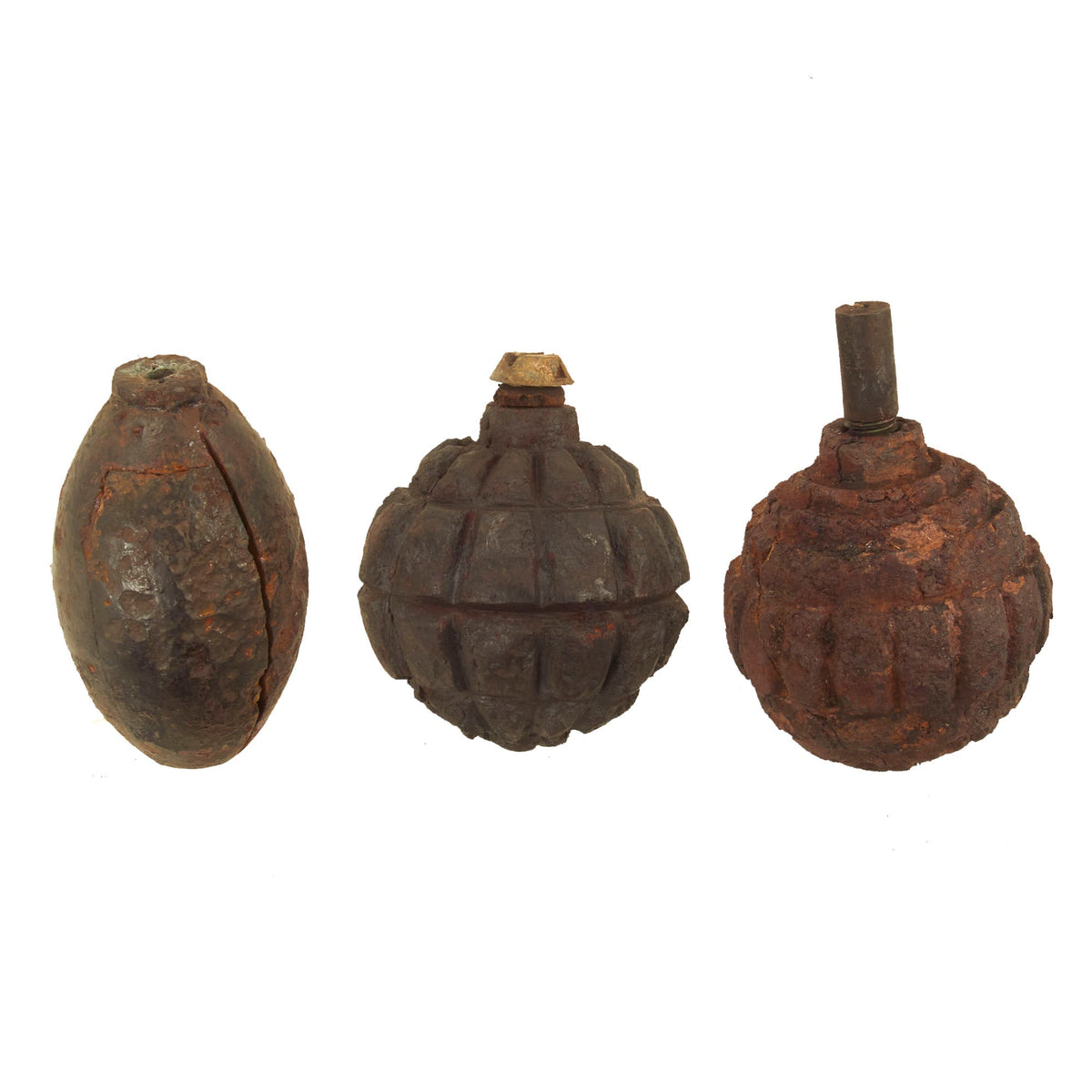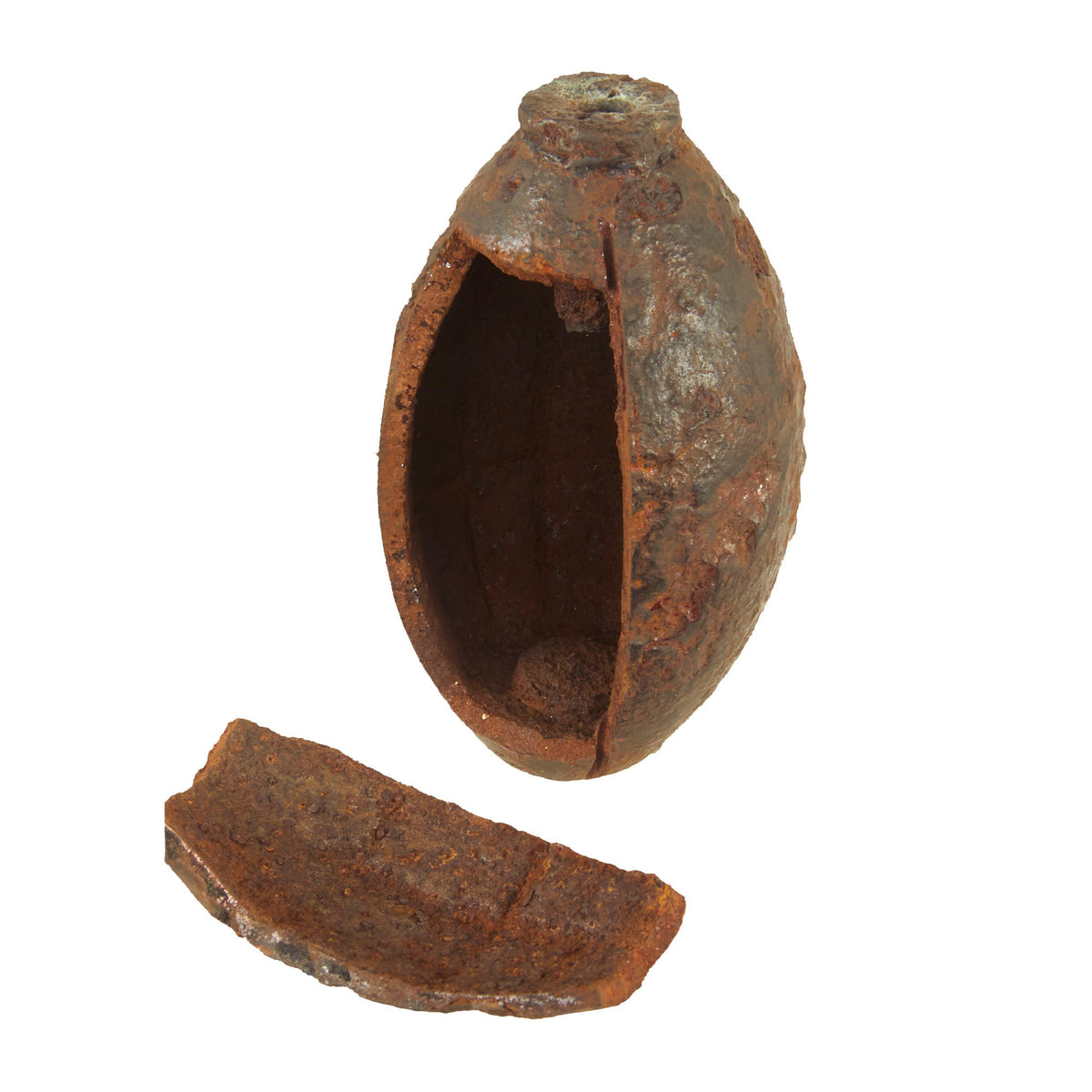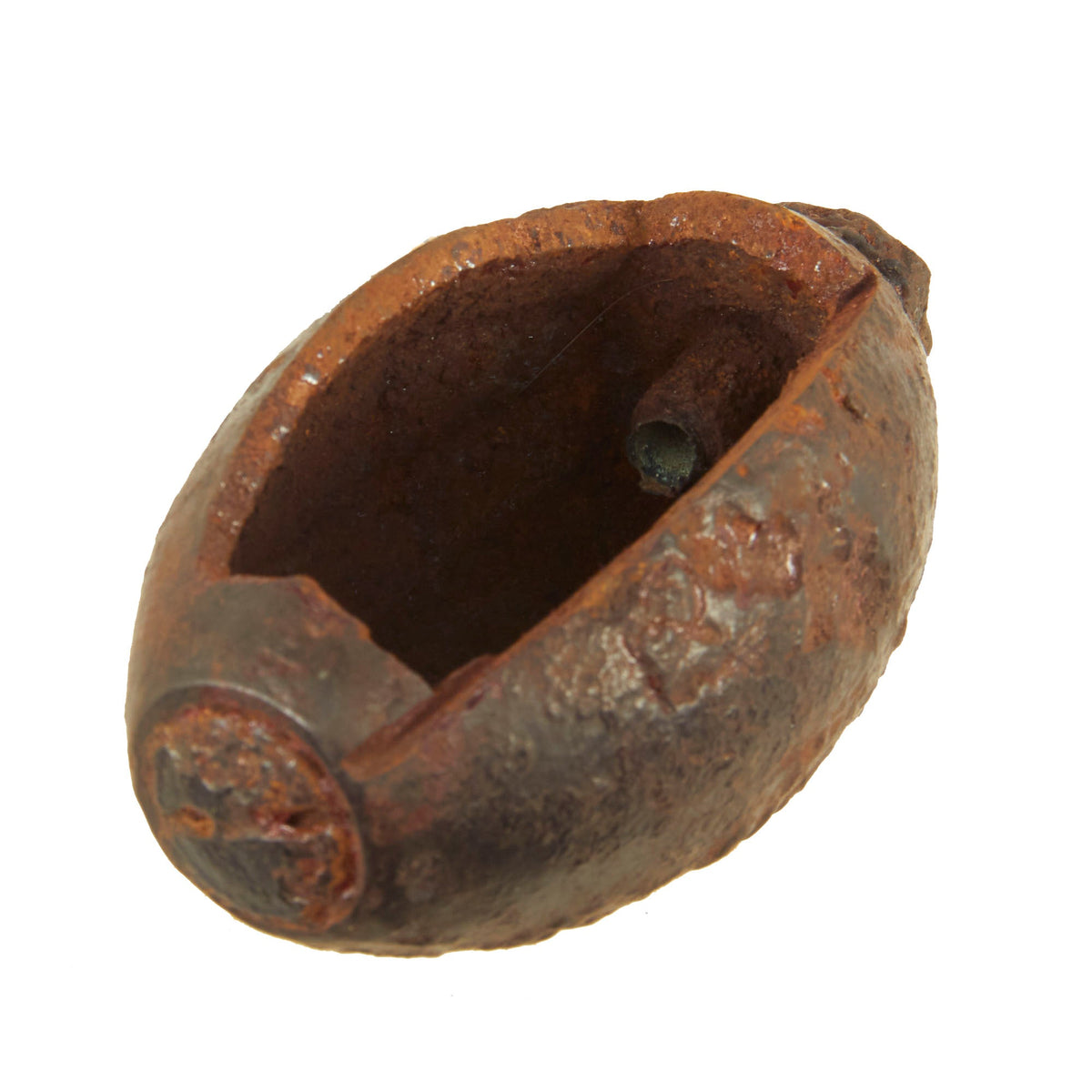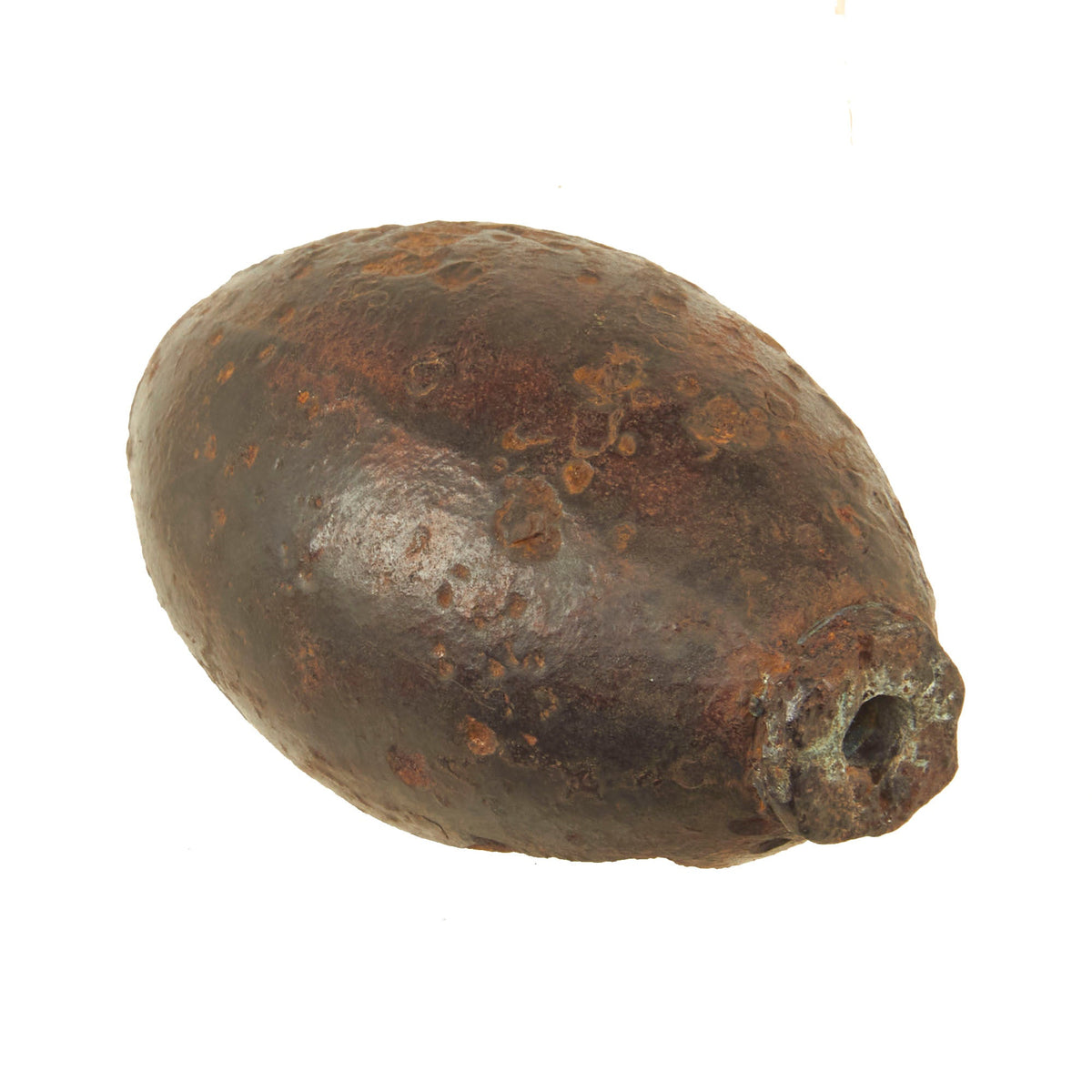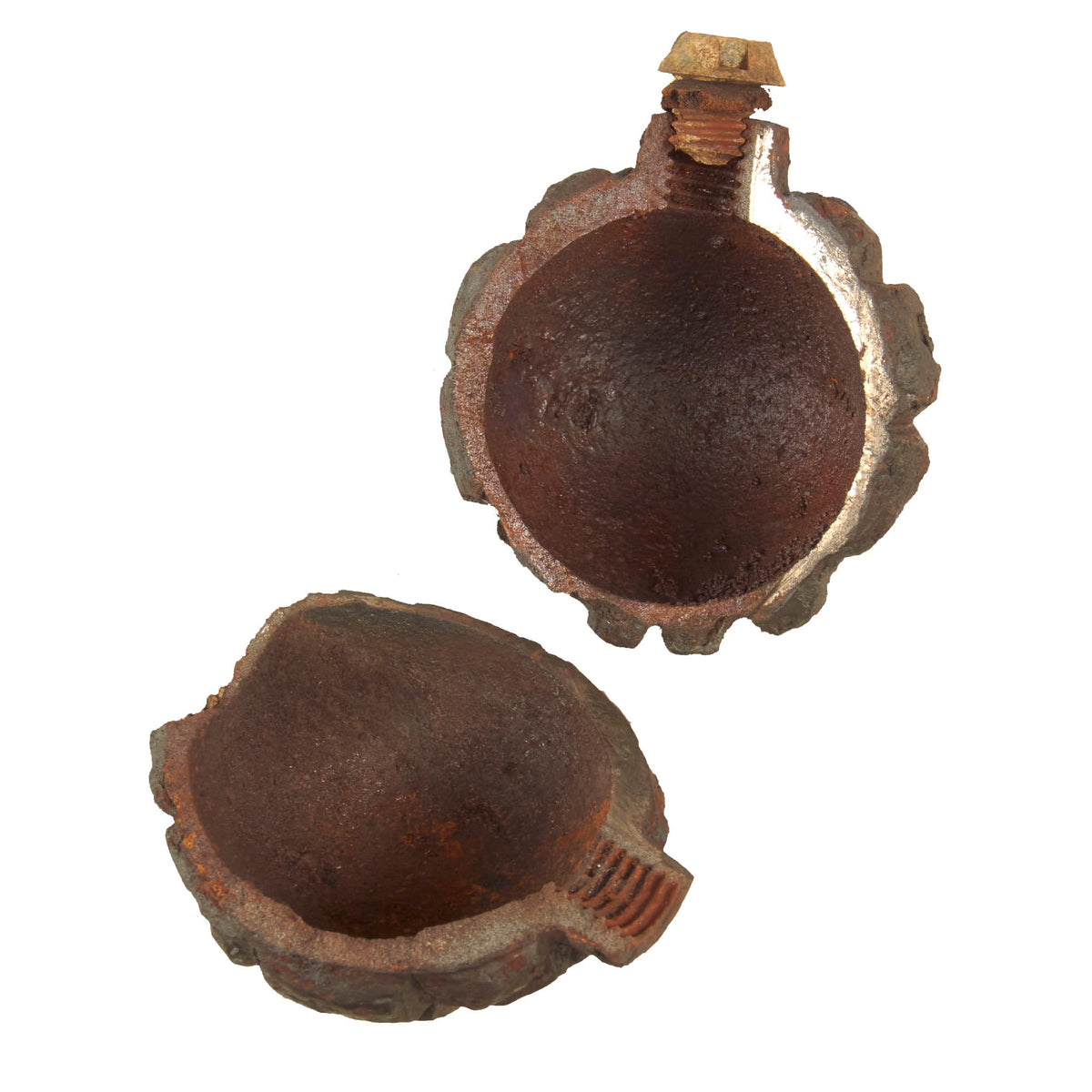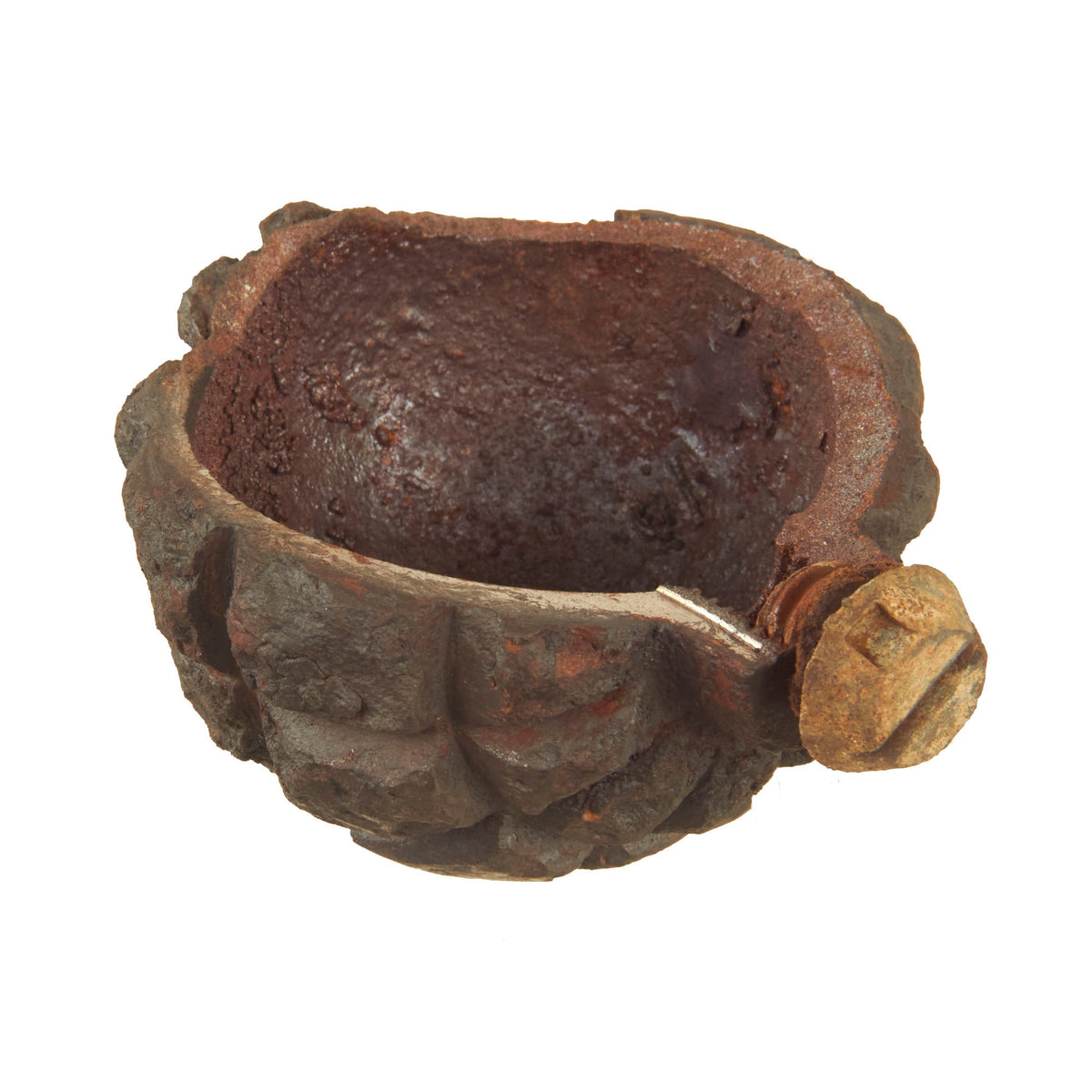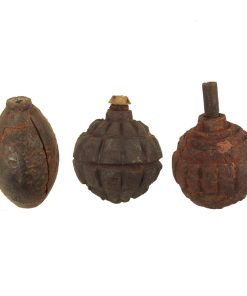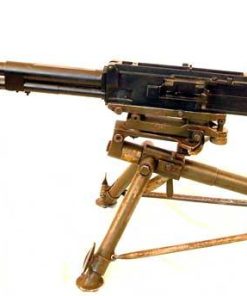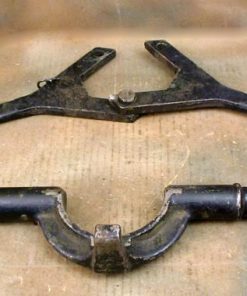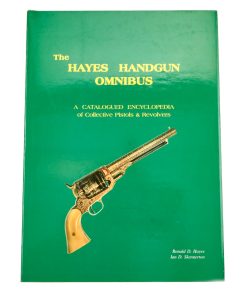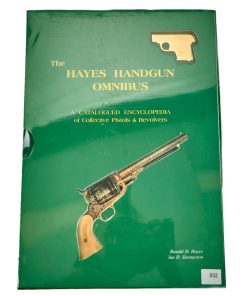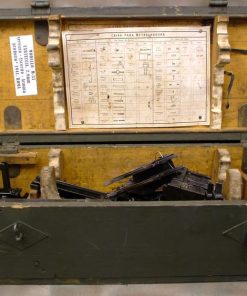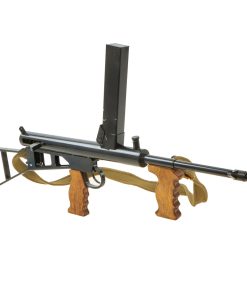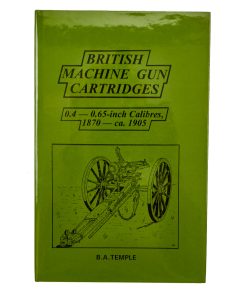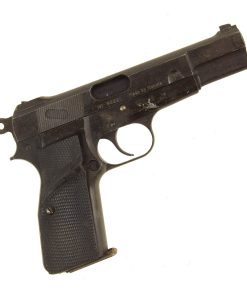Original German and British WWI Inert Relic Grenade Lot of 3 Original Items
$ 450,00 $ 135,00
Original Items: Only One Lot of 3 Available. This is a wonderful lot of battlefield dug relic grenades. All three appear to have been found by the same individual who made an attempt to cut each in half, resulting in all three being cracked in two pieces now.
Unloaded or dummy grenades, artillery shell casings, and similar devices, which are cut or drilled in an BATF-approved manner so that they cannot be used as ammunition components for destructive devices, are not considered NFA weapons. This example is in total compliance and is NOT AVAILABLE FOR EXPORT.
The grenades in this lot:
– British No. 16 Oval Grenade: The No. 16 is essentially an improved version of the No. 15. Instead of a ball shape, it has an oval shape and has less explosive charge. It was planned to completely replace the No. 15, but the defeat at Loos caused both the No. 15 and No. 16 to be withdrawn from service, as they both had the same lighting system. The No. 15 was a time-fused grenade. It was internally fragmented and incorporated a cast-iron body.
To light the grenade, the user had to remove a covering that was on the fuse, then strike an external Brock matchhead igniter against the fuse.
There were two types of fuses available; the five-second and the nine-second. The former was intended for throwing, while the latter was intended for catapults.
– Model 1915 n/A Ball Kugelhandgranate: The Kugelhandgranate (“ball hand grenade”) is the name given to several models of hand thrown fragmentation grenades manufactured in WWI Germany. This example is known as the Model 1915 n/A (neuer Art = newer model). In 1915 this simplified fragmentation pattern of the 1913 Kugel grenade had been adopted, in order to reduce production time. The only difference was the grooved pattern on the top and bottom of the exterior, and they were otherwise identical in specification.
– Model 1913 Ball Kugelhandgranate With Transport Plug: The Kugelhandgranate (“ball hand grenade”) is the name given to several models of hand thrown fragmentation grenades manufactured in WWI Germany. This example is known as the Model 1913, which differs from the later version in that it has more fragmentation sections unlike the more simplified 1915 model. As they were not made in any large quantities, German Ball Grenades are rare in any condition.
These three are in relic condition and their appearance reflects such. There is no paint present and all three has pitting, oxidation and cracking. As stated, they were attempted to be made into cutaways by the looks of it, but if not done properly they will crack which is what happened here. They could easily be fused back together if you would wish to do so but being able to view the interior makes for a great display method.
Comes ready for further research and display.
Fast Shipping with Professional Packaging
Thanks to our longstanding association with UPS FedEx DHL, and other major international carriers, we are able to provide a range of shipping options. Our warehouse staff is expertly trained and will wrap your products according to our exact and precise specifications. Prior to shipping, your goods will be thoroughly examined and securely secured. We ship to thousands clients each day across multiple countries. This shows how we're dedicated to be the largest retailer on the internet. Warehouses and distribution centres can be located throughout Europe as well as the USA.
Note: Orders with more than one item will be assigned a processing date depending on the item.
Before shipping before shipping, we'll conduct a thorough inspection of the items you have ordered. Today, the majority of orders will be delivered within 48 hours. The delivery time will be between 3-7 days.
Returns
The stock is dynamic and we cannot completely manage it because multiple stakeholders are involved, including our factory and warehouse. So the actual stock may alter at any time. It's possible that you may not receive your order once the order has been made.
Our policy is valid for a period of 30 days. If you don't receive the product within 30 days, we are not able to issue a refund or an exchange.
You can only return an item if it is unused and in the same state as the day you received it. You must have the item in its original packaging.
Related products
Uncategorized
Uncategorized
Uncategorized
Australian WWII Owen MK1 Machine Carbine SMG Custom Fabricated Replica with Sling Original Items
Uncategorized
Uncategorized
Uncategorized
Uncategorized
Uncategorized
Uncategorized
Angolan Rebel 1970s era 60mm Inert Display Mortar from Angolan Civil War Original Items
Uncategorized
Uncategorized
Australian WWII Owen MK1 Machine Carbine SMG Custom Fabricated Replica with Sling Original Items
Uncategorized
Uncategorized
Uncategorized
